kalazotz
The kalazotz are generally peaceful humanoid bat creatures roughly the size of gnomes. They are like the camazotz but smaller and less evil.
Most kalazotz live underground, but some kalazotz makes homes in forests and a small number live as minorities among dwarf, elf, or human settlements above ground. They prefer to hang their nests in the highest places they can find, either stalacites or tall trees.
The kalazotz of the newly formed Barony of Bats live above ground in traditional houses resembling those of most other humanoids, at least on the outside. They usually sleep hanging from the rafters rather than lying in beds but they more often than not eat their meals on tables on the ground just like the flightless do.
Basic Information
Anatomy
Except for their wings and faces, kalazotz are more or less fully humanoid. Their faces are much closer to bats than human. I asked my comissioned art work to base the kalazotz facial features based on real-world South American vampire bats.
Kalazotz have prehensile feet and hands. Their feet have greater grip strength and their hands have greater manual dexterity. Their claws are fairly sharp and are more lethal than human fists, but most kalazotz are better off fighting with weapons.
Most kalazotz have a wingspan slightly wider than they are tall when fully extended.
Biological Traits
Roughly the size of gnomes, kalazotz have humanoid bodies, but batlike heads and wings. Kalazotz have wing flaps under their arms and their wingspans tend to be slightly wider than they are tall.
Kalazotz feet are fully prehensile. Their hands have better manual dexterity than their feet, but kalazotz feet are pretty versatile allowing kalazotz to switch weapons or tools quickly and easily while flying. Kalazotz also have better grip strength with their feet than their hands. Kalazotz can sleep hanging upside down by their feet but most cannot hang by their hands near that long unless they are exceptionally athletic (reverse hanging is a body weight excerise some warriors do for training).
Kalazotz can live upwards of sixty-five years. Kalazotz pups can fly unaided around age two. They enter adolescence around ten years and are fully grown by age fifteen. Females remain fertile through age thirty-five while males tend to remain fertile for life.
Genetics and Reproduction
Most females give birth to single offspring, but twin births are far more common among the kalazotz than they are among humans, roughly one in four births result in twins.
Pregnancies tend to last about about 150 to 180 days. Twin births nearly always take longer, meaning twin births are rarely a surprise.
Growth Rate & Stages
Kalazotz pups can fly unaided around age two. They enter adolescence around ten years and are fully grown by age fifteen. Females remain fertile through age thirty-five while males tend to remain fertile for life.
Kalazotz can live upwards of sixty-five years with a few lucky and exceptional individuals making it to their early eighties.
Ecology and Habitats
Like most intelligent mortals, kalazotz can adapt to living almost anywhere.
Kalazotz are skilled weavers and tanners. They can and do use textiles or furs to handle cold temperatures, but they generally prefer to live in warm environments where they can exist comfortably with minimal clothes.
Kalazotz are not harmed or impaired by sunlight in anyway, but because of their sonar, very few mortals in Scarterra are better suited to living in the dark than kalazotz. Thus, most kalazotz are nocturnal or live underground by choice.
Kalazotz prefer to rest and sleep in high places, in Scarnoctis they typically build their nests on the ceilings of wide caverns and in Scarterra they often nest in tall trees.
Dietary Needs and Habits
Kalazotz are omnivores and can eat any food a human or demihuman considers "normal food".
Humans and demihumans often find kalazotz eating to look unsettling. While kalazotz are much more gentle than the camazotz they evolved from but their predatory camazotz roots tend to come out when they eat. Unless they take efforts to hide it, kalazotz often making growling and snarling noises while they eat and they tend to eat messily.
Kalazotz have strong stomachs and they can eat many things humans cannot. Kalazotz have no problem eating cooked food, and some prefer it but left to their own devices, kalazotz commonly eat meat, fungi, and vegetables raw. Kalazotz are especially fond of bloody meat, or simply drinking fresh blood. Sometimes they will ferment blood as an alcoholic drink.
Behaviour
Like most mortal races, kalazotz vary considerably from individual to individual. That said, there are some generalities.
Kalazotz tend to be curious and friendly. They are generally extroverted and socially oriented more comfortable in groups than by themselves and they are fiercely loyal to their families and friends.
They are fairly small and they do have a history of suffering at the hands of stronger and more aggressive mortal races and this has resulted in kalazotz frequently coming across as a bit timid.
Additional Information
Social Structure
Kalazotz usually live in colonies of 40 to 50 adults with roughly 20 pups and adolescents in tow. It is rare but hardly unheard of to see larger colonies, assuming the location is relatively safe and has relatively abundant food. Under these ideal circumstances, you might see a colony of up to 400 kalazotz.
Kalazotz couples are usually monogamous mating for life. Kalazotz believe very much that it takes a “colony to raise a pup.” Young kalazotz grow up with a lot of attention not only from their parents but from their aunts and uncles and older cousins as well.
Kalazotz show great deference to their elders who are in charge of most aspects of colony life. Most colonies maintain infrequent contact with three or four other colonies. Periodically they will meet to swap mating partners and to meet to keep apprised of events that affect them all.
Facial characteristics
Their faces are far more bat-like than humanoid, with large pronounced ears, dark eyes, and fanged mouths.
Geographic Origin and Distribution
Kalazotz are regionally native to West Colassia.
Most kalazotz live underground with the exceptions of the tree dwelling Codenya kalazotz, the now extinct Grey Forest kalazotz, and the newly formed Barony of Bats and in lesser number throughout the Border Baronies Region.
Average Intelligence
Kalazotz have intelligence roughly equal to humans or gnomes. Kalazotz pups have accelerated learning and can pick up new skills somewhat faster than human children but this developmental advantage mostly disappears in early adulthood.
Perception and Sensory Capabilities
Kalazotz have eyesight comparable to humans requiring light to see, but sight is not their primary sense. Kalazotz have superior hearing and sense of smell relative to humans and most impressively they have sonar enabling them to the "see" in the dark.
Civilization and Culture
Naming Traditions
Kalazotz names resemble traditional Mesoamerican names.
Gender Ideals
Kalazotz males and females are difficult for non-zotz humanoids to tell apart if they are wearing loin cloths (which most kalazotz do when interacting with other races). On average, males and females are roughly the same size but males vary more with more on the extremes so both the smallest and largest kalazotz are usually male.
Most kalazotz colonies are slightly matriarchal with female elders receiving slightly more deference than male elders, and there is a general attitude that males should be willing to die for the greater good if it comes down to that.
This matriachal bias is a value they inherited from the camazotz, but the kalazotz are far less extreme. The camazotz are very matriarchal and view their males as very expendable canonfodder encouraging brutal darwinism so only the strongest males mate. Kalazotz colonies will only sacrifice their males for the greater good in very dire situations.
Unlike the camazotz, kalazotz usually practice monogamy and only turn to polyandry if a clan has suffered devestating losses skewing the male-female balance.
Courtship Ideals
Most kalazotz clan let their young adults and adolescents pick their own mates rather than saddle them with arranged marriages but bachelors and spinsters are commonly given a mild stigma and promiscuous bats with multiple sexual partners are given a larger stigma.
Most clans are allied with other clans that they meet up with periodically throughout the year. Commonly during these meetings, the elders will go send their unmarried young people on lengthy errands or foraging expeditions with the unmarried young people of other clans, so they can meet and interact with potential mates.
If two kalazotz decide to get married, after a fairly informal ceremony the couple will alternate between both the wife and husband's clan for anywhere between six months and three years until they decide which spouse's clan they wish to stay with full time. If one of the clans is smaller, there will be substantial pressure to join that one.
If both clans are fairly large to the point where they are overtaxing their resources, the clans might choose to have several young couples leave en masse and this is how new kalazotz clans usually form.
Average Technological Level
Kalazotz have developed primitive metallurgy and rudimentary agricultural techniques. Many, though not all, kalazotz have formal alliances with dwarves. These kalazotz have full access to all the technology dwarves have. Kalazotz clans not allied directly with the dwarves usually have contact with kalazotz clans that have so this has helped diffuse technlogy throughout kalazotz across Scarterra, at least to a limited extant.
Kalazotz craft of fame is their weaving skills, especially for their nets. They make excellent ropes, nets, baskets, and large hammocks. The massive hammocks are the base of most of their permanent settlements, generally placed as high as possible in tall trees or among stalactites of cavern ceilings underground.
These hamock/nets are used to store food and other supplies and provide shelter and a means of staying up for their colony members too young, too old, or ill to hang upside with their feet.
Kalazotz also use training nets or safety nets to catch falling pups while younger clan members are learning to fly. Sometimes safety nets are used for adults if the clan is fond of full contact aerial sports.
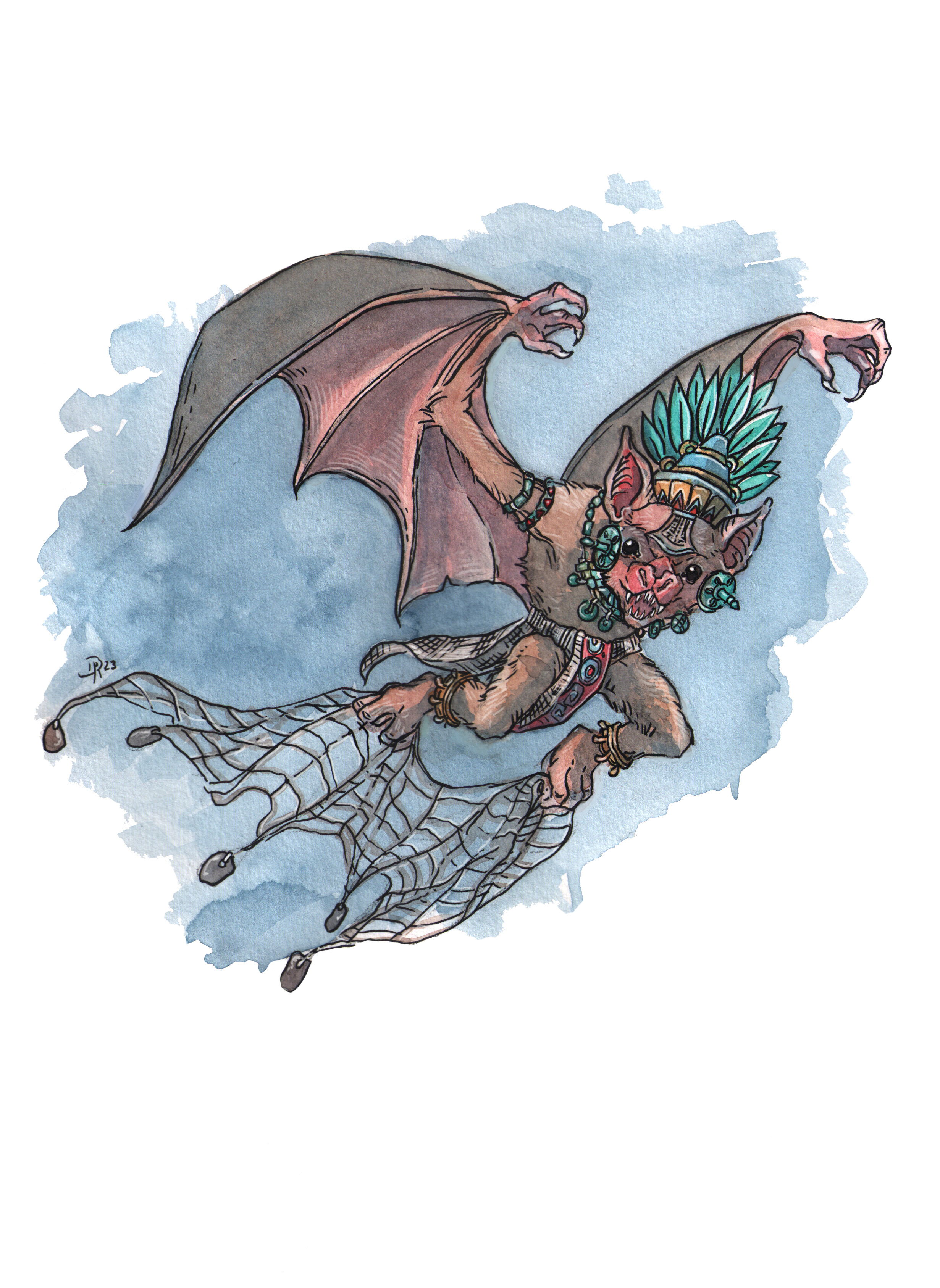 Carrying nets let large groups of kalazotz split the weightload of cargo letting them fly heavy loads by air. Smaller weighted nets are commonly used in hunting and war.
Carrying nets let large groups of kalazotz split the weightload of cargo letting them fly heavy loads by air. Smaller weighted nets are commonly used in hunting and war.

Commissioned kalazotz flying, grey background by Diana Rahfoth
Common Dress Code
Kalazotz are furry, and do not need to wear clothes unless they enter very cold environments.
Kalazotz have few inclinations towards modesty and they generallly have few taboos about nudity (and they prefer to be unencumbered for ease of flying), but centuries of interaction with other races has caused most kalazotz to gradually pick up the practice of wearing loin cloths to cover their naughty bits.
Kalazotz are skilled weavers so they will sometimes wear clothing to make a fashion statement more than for protection from the elements. They are especially prone to wearing head gear.
Culture and Cultural Heritage
Kalazotz have an extensive oral history, but kalazotz that live in or near dwarf holdings have begun keeping written accounts of their colony history. They have also adopted ancestor worship customs from the dwarves and this is slowly spreading among Kalazotz everywhere.
Some colonies have begun carving hanging stalae out of tree branches or stalactites to honor their ancestors. See Kalazotz memorial stelae for more details.
Common Taboos
While they are not true pacifists, kalazotz culture encourages seeking non-violent solutions first whenever possible.
Kalazotz are obligate carnivores and they do like to eat their meat raw and to drink blood from animals. They can survive on grains and vegetables but it is uncomfortable for them to do so. They know this disturbs most humanoids so they prefer to eat in private.
Like most mortals, kalazotz have severe taboos against cannibalism. Kalazotz do not mutate from Cannibal Sickness the way other races do, instead kalazotz cannibals gradually revert back to being full camazotz, more often than not with an even greater hatred of untained kalazotz than the conventional camazotz.
History
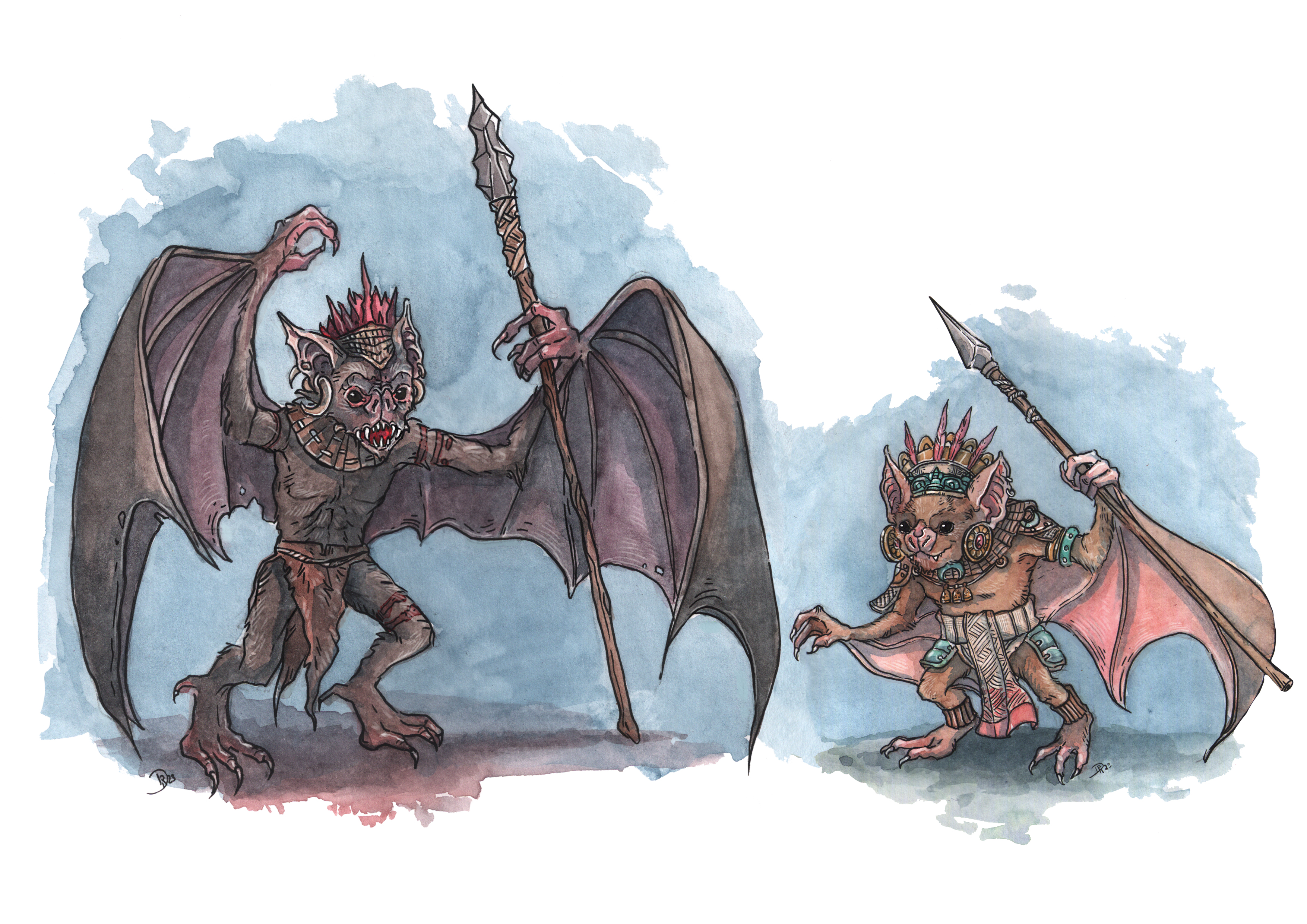
Comissioned art of Camazotz/Kalazotz comparison by Diana Rahfoth
When Mordock the Destroyer drove the dwarves out of Meckelorn, Mordreck had a huge variety of different creatures in his army. The kalazotz were virtually the only “monster race” that sided with the dwarves instead of Mordreck. The kalazotz provided shelter to dwarven refugees, especially children. Many generations later, the dwarves have not forgotten that the kalazotz were a friend when friends were all too few. Kalazotz and dwarf relations are very cordial. Admittedly, the dwarves find the kalazotz weird and gross, but they still recognize them as weird and gross creatures who are valued allies.
Kalazotz make up about 8% of Meckelorn's population (where the dwarves generally view the batfolk as valued friends) and 2% of Stahlheim's population (where the dwarves generally view the batfolk as useful allies). These are commonly considered dwarf influenced kalazotz.
The Codenya kalazotz kalazotz have actually been allies to the wood elves much longer than the dwarf influenced kalazotz have allied with the dwarves but there are a lot fewer kalazotz among wood elves than there are kalazotz among dwarves so kalazotz have had a proportionally bigger impact on dwarf society than wood elf society. Also, the alliance between the Codenya kalazotz and Codenya elves is more of a military/trading arrangement than one of true kinship.
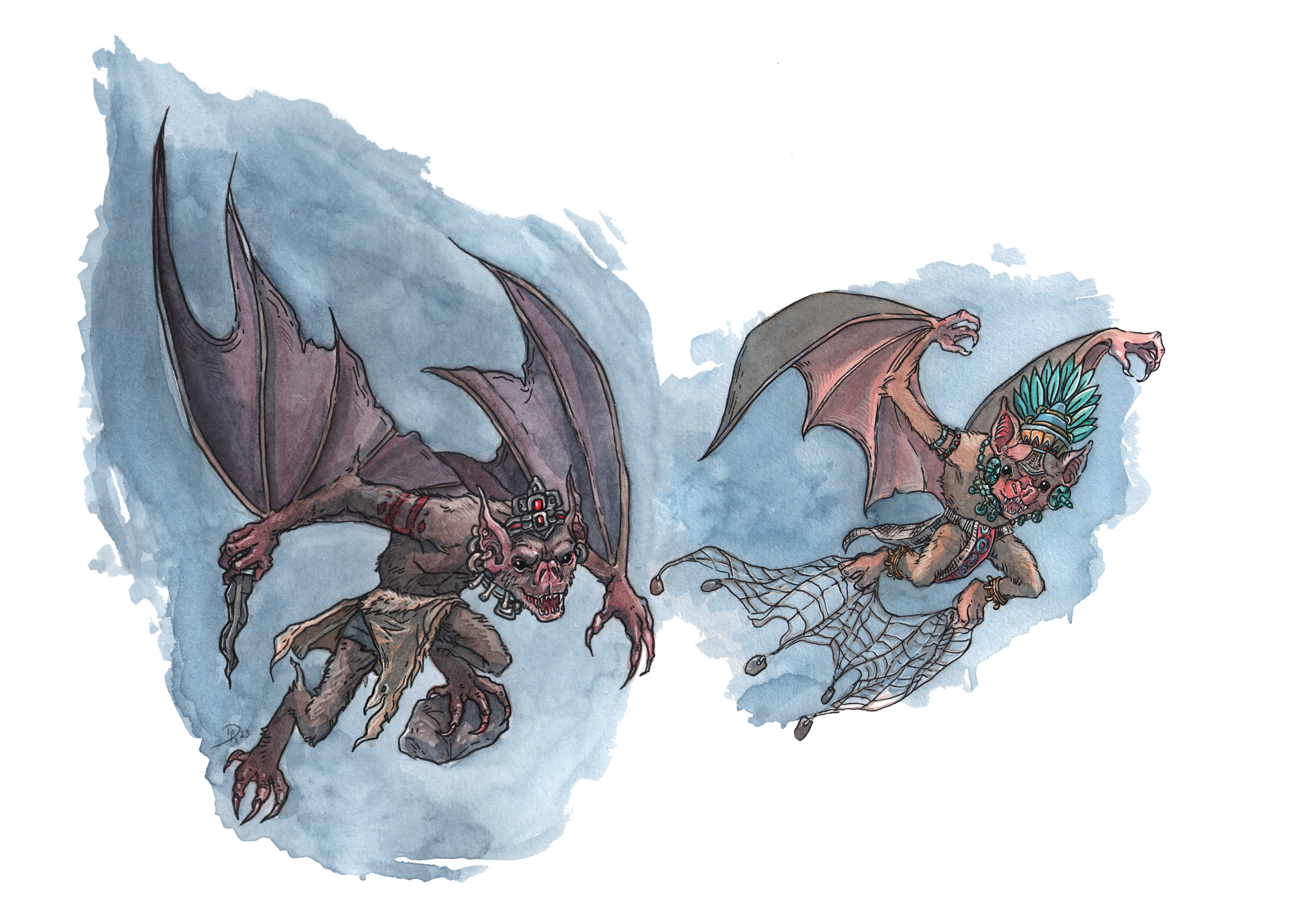
Comissioned art of Camazotz/Kalazotz comparison flying by Diana Rahfoth
Common Myths and Legends
By their own legends, their founder was a camazotz who prophesied the Second Unmaking and predicted the camazotz would need to change their ways to survive the coming cataclysm.
Mera made them smaller over successive generations and gradually pulled the inherit rage from their souls while this happened.
Most outsiders aware of legend doubt the kalazotz's legend. There is no record of any penitent camazotz before or during the Second Unmaking. There is no record of any oracle of any race predicting the Second Unmaking and the oldest recorded sightings of the kalazotz by others races were several centuries after the end of Unmaking.
Interspecies Relations and Assumptions
Apart from the camazotz who are their eternal foes, the kalazotz seek friendly interaction with almost all other races.
Kalazotz are friendly and optimistic but they are not foolishly naive. They do not always see their desire for peaceful relations reciprocated. When pressed by violent outsiders, kalazotz will usually fly away and relocate to a more remote area. In general northern kalazotz will try to talk first while southern kalazotz are more prone to isolationism.
Relations between kalazotz and dwarves are usually very good due to historical ties between the two races. Both Meckelorn and Stahlheim have small kalazotz minorities integrated into their society. Among dwarven lands, kalazotz still value their privacy and are more likely to be found on the outskirts and frontiers of dwarven lands than in large dwarven cities.
Kalazotz have used their friendly relations with dwarves as a springboard to friendly relations with other humanoids but this is not possible in areas that do not have many dwarves.
In some areas, kalazotz are still viewed by most of the "Flightess" as a threat. In these places, some maverick kalazotz have said maybe the camazotz have the right idea. If the flightless are going to treat like kalazotz like monsters, then the kalazotz should act like monsters. So far this is just a topic for philosophical debates, the kalazotz still live peacefully…for now. Some elders have noticed that the pups of those who endorse the potential of violence against the Flightless are a just a little bit bigger than average and have slightly larger claws and fangs and slightly fussier tempers.
Building Kalazotz Characters
Wings: Kalazotz are agile flyers. For detailed rules on aerial maneuvers they can perform, check out my article So you want to play a kalazotz?. Keen Senses: Their eyesight is similar to humans requiring light to see. Kalazotz can "see" in the dark with their sonar (though they cannot distinguish colors or fine details). Their kalazotz also reaches farther than their sight, even under good light. Kalazotz have fairly good sense of smell and hearing. In order to use sonar, a kalazotz needs to verbally "ping" softly, which is quiet but not silent. As long as a kalazotz has full access to all his/her senses (including the ability to "ping") the kalatzotz gets a -1 difficulty on general Alertness rolls. Claws and Fangs: Kalazotz can inflict their Strength -1 lethal damage with their claws. They can inflict Strength +1 lethal damage with their bites, but they have to grapple opponents first in order to land a bite. Despite their natural weapons, they still are penalized when fighting an armed opponent unarmed (unless they have the Living Weapon Merit) as their claws really aren't much better than human fists. Stealthy: Kalazotz are small and nimble and they are not quite as silent as owl, but they are pretty quiet while flying. Kalazotz receive a -1 difficulty bonus on all Stealth rolls even in well-lit areas. Kalazotz are near undetectable in the dark to beings without sonor or magical darkvision. Versatile Hands/Feet: Kalazotz get a bonus strength dice for contests or other rolls involve gripping or carrying things with their feet (though they have less manual dexterity with their prehensile than their hands). Kalazotz can run on all fours to increase their speed, running about as fast as a human though of course they cannot carry items in their hands while doing this. Puny: Kalazotz receive a +1 difficulty penalty on all non-magical Strength rolls and on Willpower rolls when making Feat of Strength checks. Kalazotz have the carrying capacity of other puny creatures such as gnomes and goblins of equivalent dots of Strength, but they must carry lighter loads while flying, So you want to play a kalazotz? for details on kalazotz carrying loads while airborne. Non-humanoid: Around humans and others not accostomed to kalazotz, they suffer a +1 or +2 penalty on Appearance based rolls. Sometimes they suffer a +1 penalty on Charisma rolls if the non-Zotz are especially distrusting or xenophobic. Kalazotz PCs start out with 10 fewer freebie points.
Genetic Ancestor(s)
Lifespan
65 years
Average Height
Adult kamazotz average around three and a half feet tall and have roughly five foot wing spans. On average males and females have roughly the same height and wingspan, but males are more variable so the biggest and smallest batfolk tend to be male.
Average Weight
Most adult kalazotz weigh between forty and sixty pounds. Males and females are roughly the same weight on average, but males are more variable so the biggest and smallest batfolk tend to be male.
Geographic Distribution
Related Organizations
Related Ethnicities
Related Myths

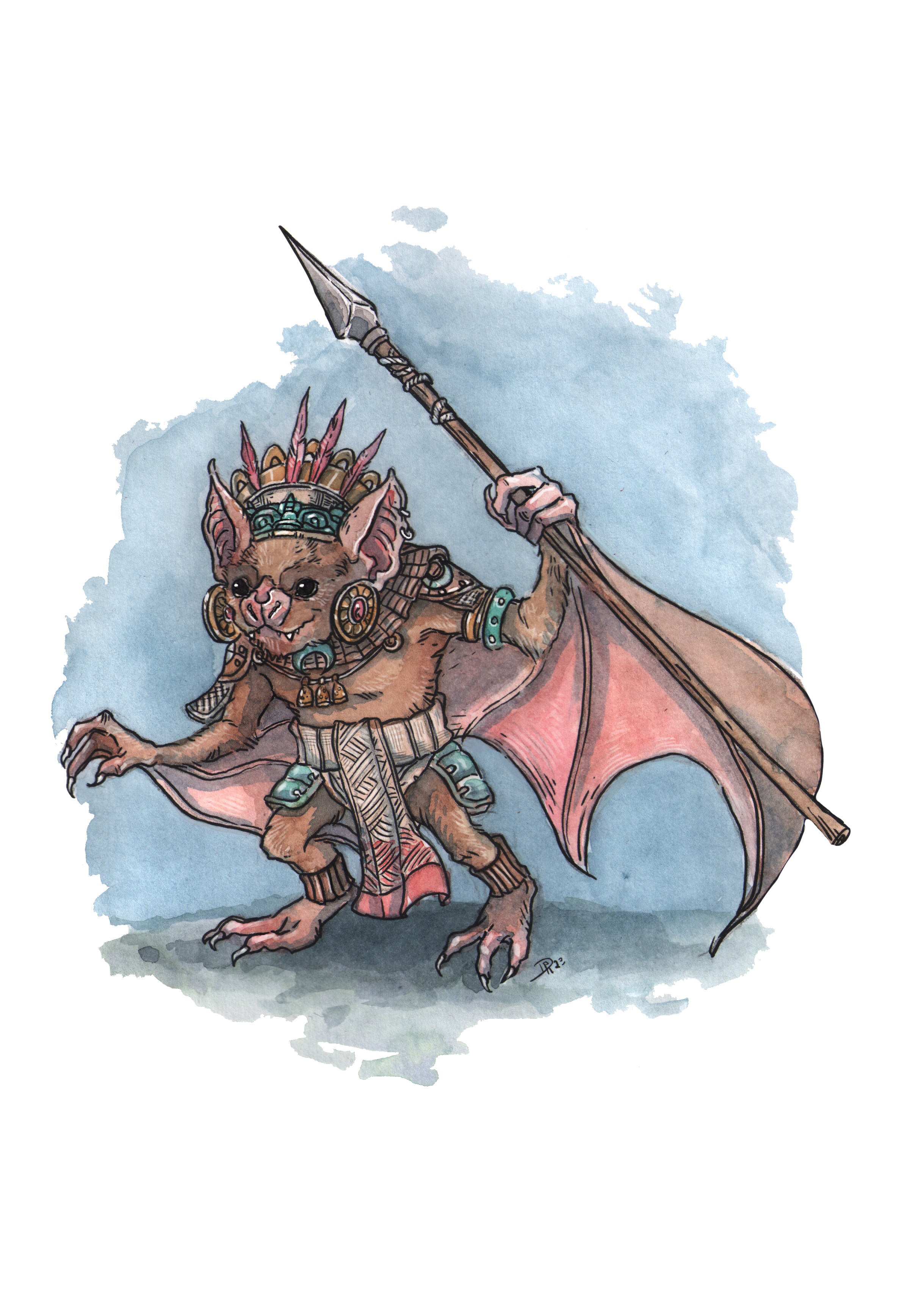
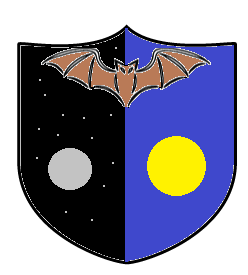
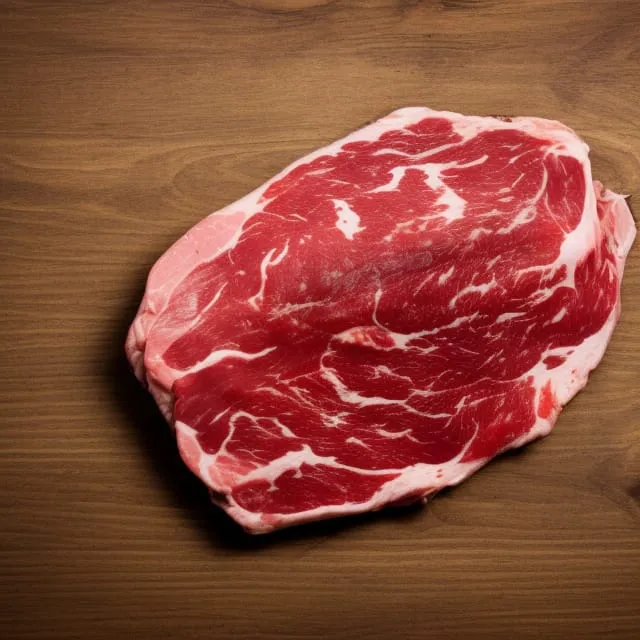


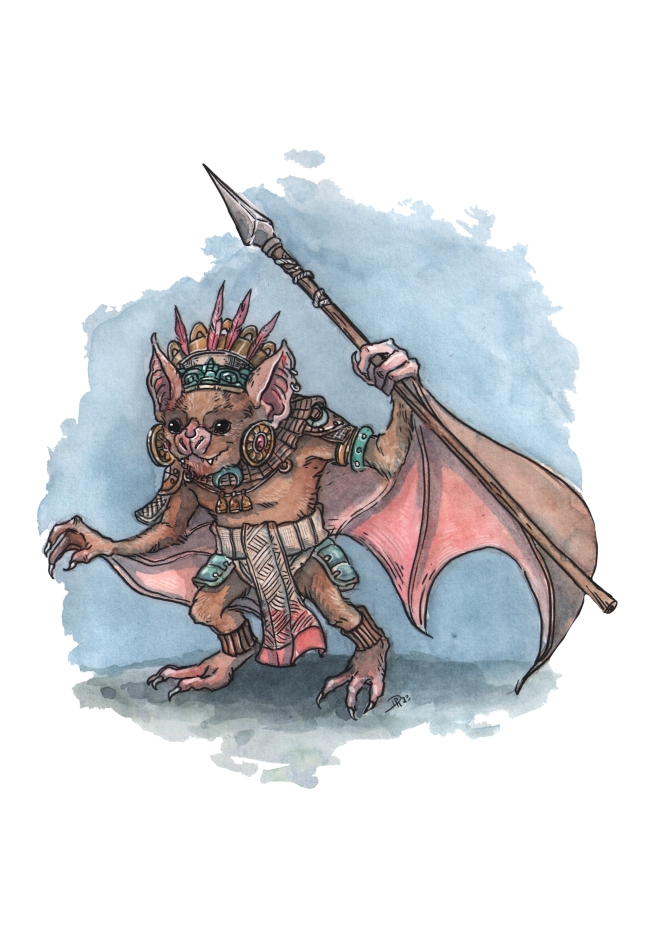
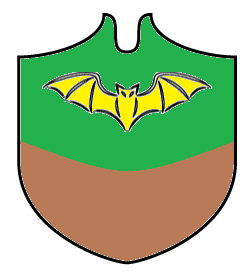
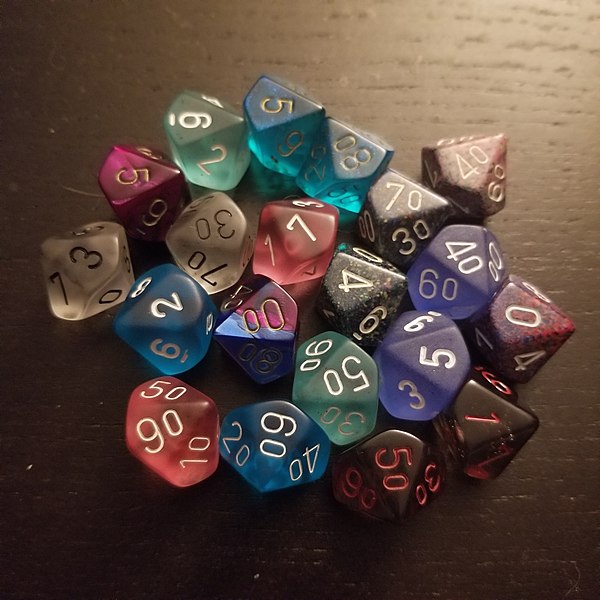
Comments